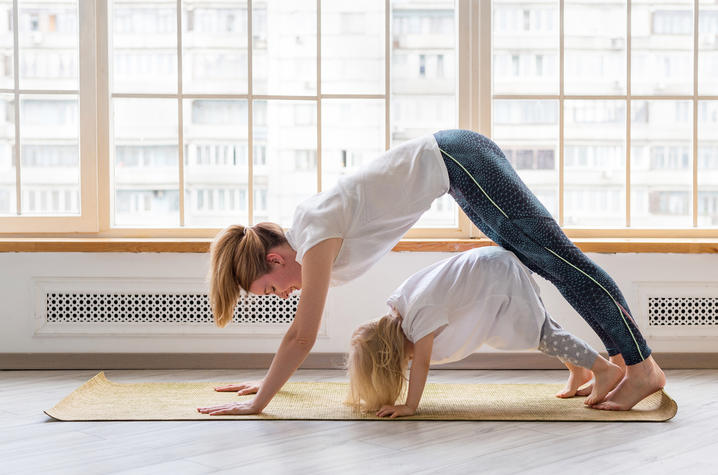Tips for Keeping Kids Active at Home

LEXINGTON, Ky. (May 5, 2020) — Movement is fundamental for kids: it helps develop motor skills like running, jumping, and balancing; build strong bones, maintain weight and improve heart and brain health. Being active also lets kids interact with others, whether they’re walking with their immediate family, playing a sport or riding bikes with friends.
Unfortunately, some of these opportunities are not available right now, but kids (and the adults who care for them!) still have the same needs for physical activity. Kids aged 6 – 17 years should get 60 minutes of moderate physical activity – something like a brisk walk – every day. Kids under six years do not have a specific recommendation, but a good target is three hours per day of light or moderate movement.
Staying Active as a Family
Being active as a family provides great opportunities for role modeling healthy lifestyles. When kids see important adults in their life being active, they are learning that being active is an important part of being healthy.
Being active together also provides amazing opportunities for us to connect with family members, neighbors and community members. In a world filled with distractions and responsibilities, being active together is a way to improve health, build strong relationships in our families and spend meaningful quality time with the people we love.
Keep it simple – go for a family walk or bike. If you have young kids who can walk, but cannot ride a bike, try a balance bike so you and your child both get some activity. Try a local park, trail or other new location to mix up your scenery.
Remember that yard work and gardening count as movement too – you can do these as family activities.
If you’re stuck inside, get creative:
- Make stations inside your house for different activities. Let each member of the family lead an activity they designed.
- Play music and dance together.
- Take a yoga class online.
What if My Kid Doesn’t Want to Be Active?
Some kids seem to crave movement more than others do, but regardless of preferences, all kids need to move! Here’s how to promote physical activity among kids who would prefer to do other things.
- Avoid using physical activity as a punishment or making it something your child has to do (i.e., exercise for 30 minutes and then you can have screen time). Using physical activity in this way might help kids to move in the short term, but will not help them stick with it over time.
- Expose kids to as many activities as possible. The more they try, the more likely they are to find something they enjoy.
- Make the activity about something other than the physical movement; align it with something your child loves to do. For example, if your child loves being outside, you could try going on a nature hunt instead of going on a walk. If your child loves to be around others, try to find ways to be social and active like riding bikes with friends.
As the state’s flagship, land-grant institution, the University of Kentucky exists to advance the Commonwealth. We do that by preparing the next generation of leaders — placing students at the heart of everything we do — and transforming the lives of Kentuckians through education, research and creative work, service and health care. We pride ourselves on being a catalyst for breakthroughs and a force for healing, a place where ingenuity unfolds. It's all made possible by our people — visionaries, disruptors and pioneers — who make up 200 academic programs, a $476.5 million research and development enterprise and a world-class medical center, all on one campus.




